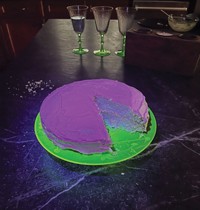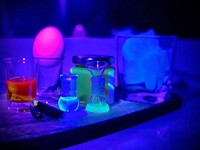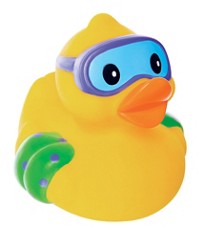Advertisement
Grab your lab coat. Let's get started
Welcome!
Welcome!
Create an account below to get 6 C&EN articles per month, receive newsletters and more - all free.
It seems this is your first time logging in online. Please enter the following information to continue.
As an ACS member you automatically get access to this site. All we need is few more details to create your reading experience.
Not you? Sign in with a different account.
Not you? Sign in with a different account.
ERROR 1
ERROR 1
ERROR 2
ERROR 2
ERROR 2
ERROR 2
ERROR 2
Password and Confirm password must match.
If you have an ACS member number, please enter it here so we can link this account to your membership. (optional)
ERROR 2
ACS values your privacy. By submitting your information, you are gaining access to C&EN and subscribing to our weekly newsletter. We use the information you provide to make your reading experience better, and we will never sell your data to third party members.
Environment
Newscripts
Edible Packaging, Sharks With Frickin’ Lasers
by Sophia L. Cai
May 15, 2012
| A version of this story appeared in
Volume 90, Issue 20
Biodegradable chip bags and biobased soda bottles are just a few of the environmentally friendly packaging options that food manufacturers have tried in recent years. But David A. Edwards is taking efforts to reduce packaging waste one step further: He envisions that instead of discarding or recycling food wrappers and drink bottles, future snackers would just eat them for dessert.
That’s the idea behind Edwards’ brainchild, WikiCells, which are foods with edible containers. So far, yogurts, soups, and fruits have been designed to sit on store shelves, without all the wasteful plastic packaging.
“We will eventually look back at the plastics packaging era as starting at one point and ending at one point,” says Edwards, a biomedical engineer at Harvard University. “Right now, sustainability in our minds is limited.”
WikiCells take inspiration from biological cells and fruits. Thin and edible like grape skin, WikiCells skin is made of charged particles from chocolate, nuts, or dried fruit held together by ions and charged natural polymers, such as chitosan. Some WikiCells also have an outer shell made of, say, chocolate or sugarcane bagasse. This gel-like packaging lets consumers rinse off a WikiCells orange, stick in a straw, slurp the juice, and eat the flavored skin.
Edwards says eating WikiSoup might be less intuitive. “If I were to hand you WikiGazpacho, you wouldn’t know what to do with it; it’s like a water balloon,” he says. “But if I serve it over a bed of vegetables, then the tomato-flavored skin becomes part of the meal.”
WikiCells have come a long way since Edwards introduced an early prototype on French television. When the host asked people off the street what they thought, “they were horrified by what they were looking at,” Edwards laughs.
Later iterations have gotten much more positive feedback, and the Newscripts gang doubts people will scoff at WikiCells’ newest creation, WikiIceCream, which will launch in Paris on June 14. On hot summer days, you can poke a straw into the fudgy shell to enjoy a melting WikiIceCream as a milkshake.
Advances in science aren’t always inspired by nature. Hong Kong-based firm Wicked Lasers, for example, asked marine biologist and TV host Luke Tipple to attempt a feat inspired by the “Austin Powers” supervillain Dr. Evil: “sharks with frickin’ laser beams attached to their heads.”

Tipple, who works extensively with sharks, was wary of such a publicity stunt. But when Wicked Lasers showed interest in scientific applications and said it would fund Tipple’s research in exchange for video footage of its laser in action, a collaboration was born.
During an April dive in the Caribbean Sea, Tipple attached a low-powered green S3 Krypton laser to the dorsal fin of a lemon shark. The laser helped test how sharks move toward stimuli, whether the animals are deterred by laser beams, and how well the noninvasive laser attachment clip stays put on the sharks.
And as his footage shows, the experiment went well, with no harm to human or shark (http://bit.ly/KL7NGI).
“It’s nonsense,” says Tipple of sharks’ bad rap. “Even my brief interaction caused them to swim away. I got close enough to get my footage and data, and we all went away happy.”
Proponents of using lasers to deter sharks may not be as happy. Although more research is needed, Tipple saw no evidence that lasers scare off sharks. A wall of high-powered lasers might, he says, but that could injure sharks or cause the forward-swimming creatures to dart farther into areas protected for humans. “But nets cause a lot of damage to marine animals,” Tipple says. “So if we could use lasers that don’t cause damage, I’m all for it.”
Tipple is now plotting more research with frickin’ laser sharks. “Science is fun. I love sharks, and when I first saw ‘Austin Powers’ sharks with killer laser beams, I thought, ‘Ah, cool!’ If I can get people to care about sharks through whatever means, I’ll do it.”
Sophia L. Cai wrote this week’s column. Please send comments and suggestions to newscripts@acs.org.






Join the conversation
Contact the reporter
Submit a Letter to the Editor for publication
Engage with us on Twitter